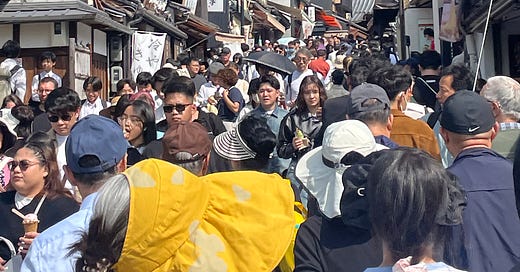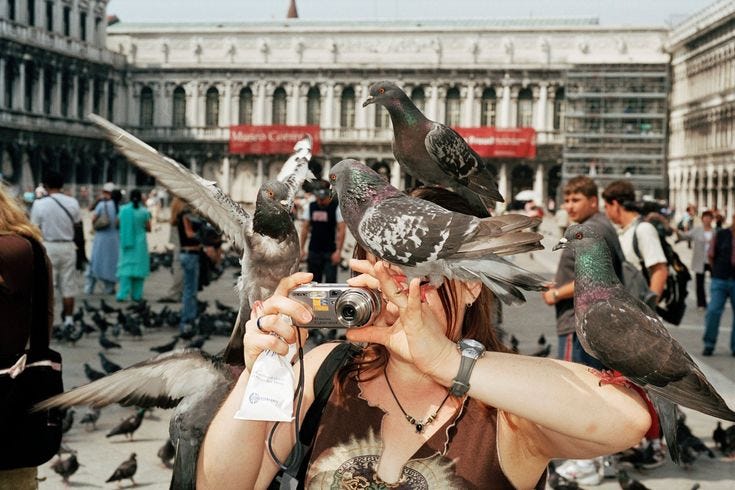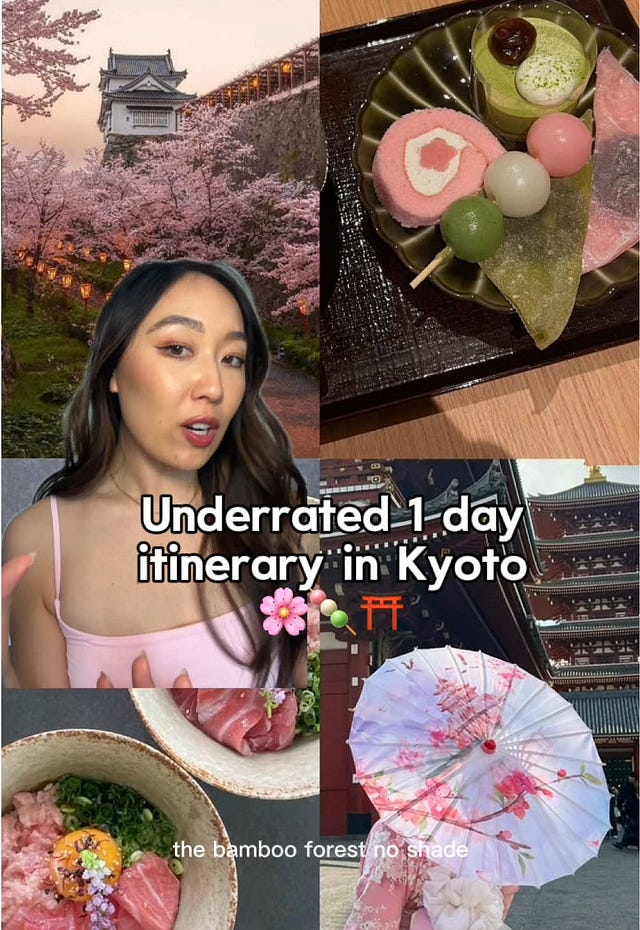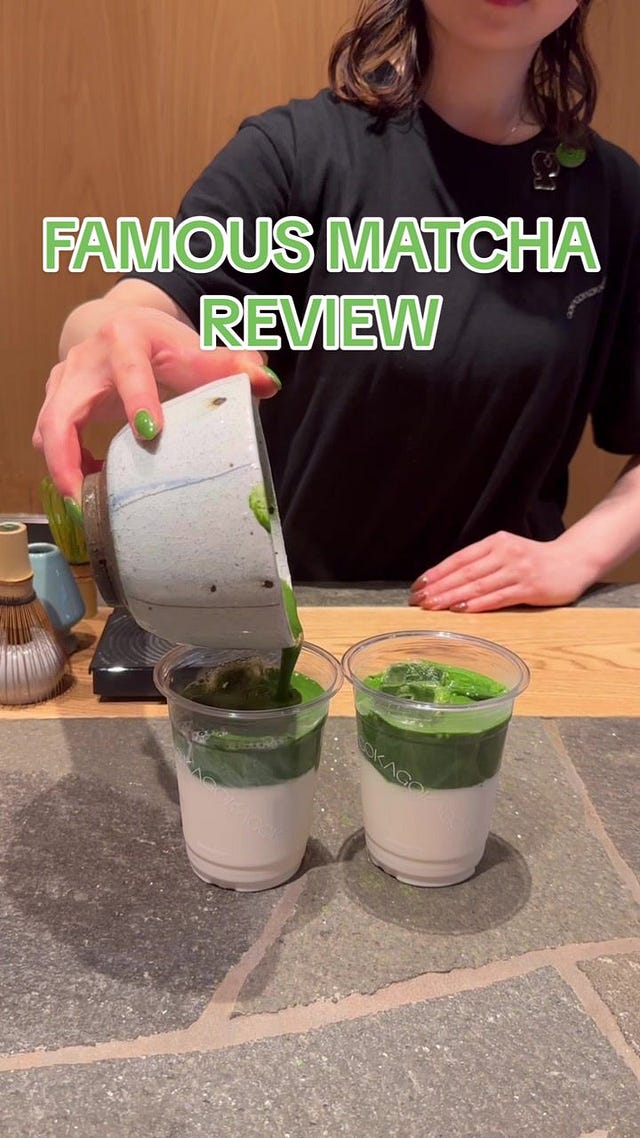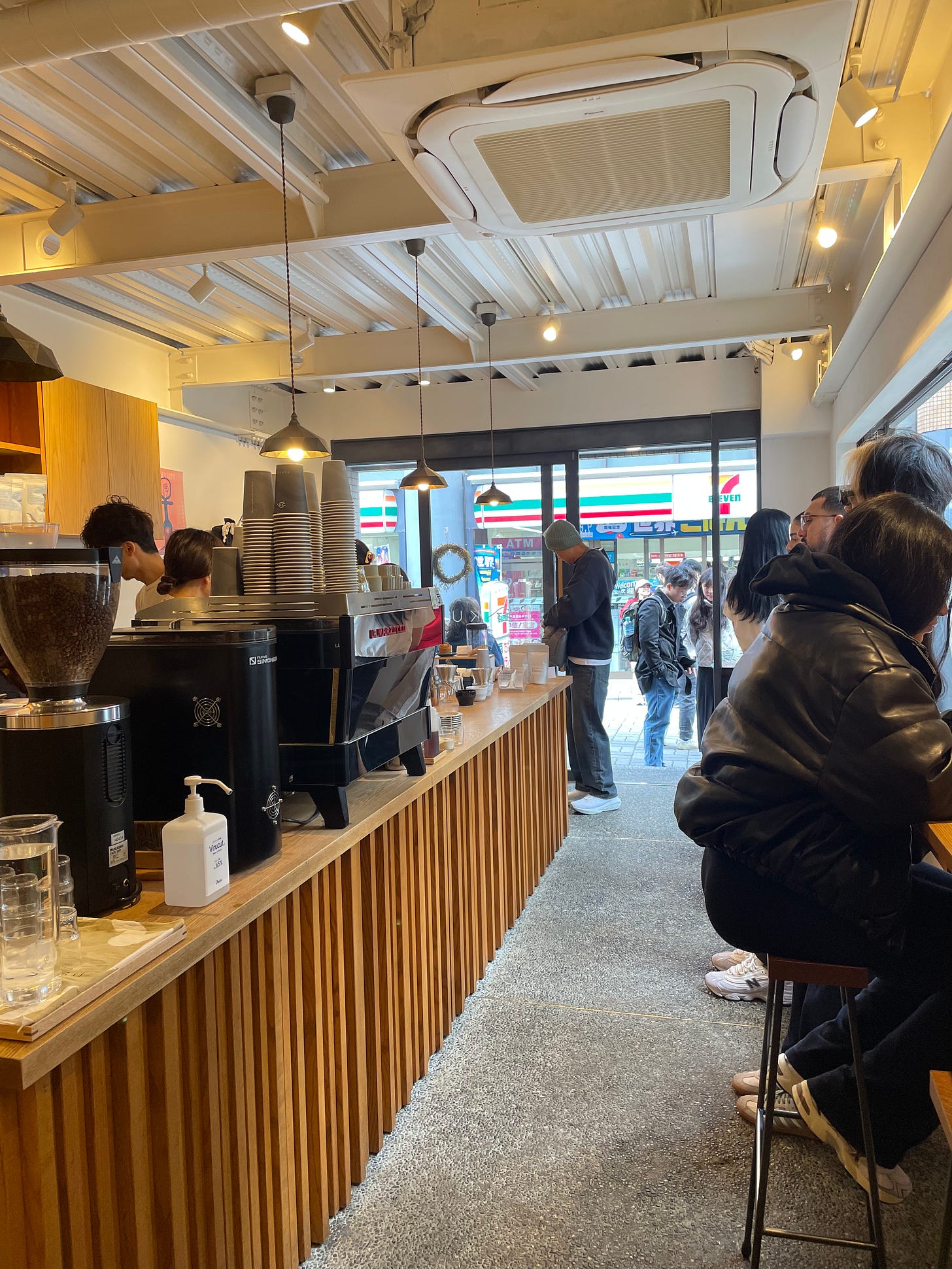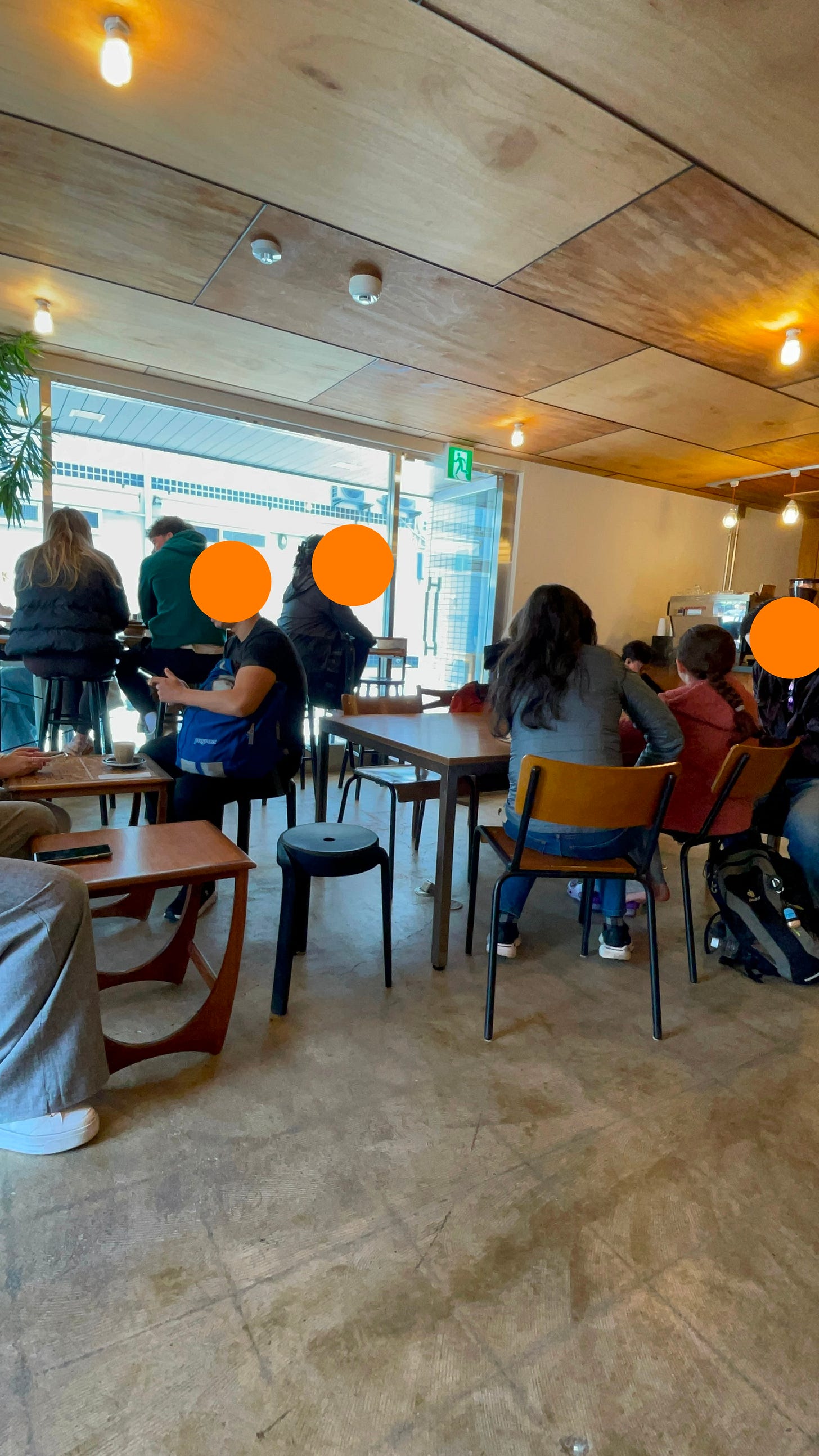Part 1 : Kyoto is more than matcha, I think
I just came back from a 10day work+fun trip to Kyoto, and I got a lot to say!
Well hi friends. I’m back in the studio in Yutenji after a trip to Kyoto for work and fun. I was there for 10 days and I didn’t think that this trip would bring up so many emotions. Like the scenes at Saihoji (koketera), every foreigner sitting on the tatami flooring, meditating and then picking up a pen to hand copy a sutra (shakei). It was a scene straight from White Lotus S3 if you ask me. Or like when I was being spoken to in English at every establishment because no one in their right mind will think that I’m Japanese, and I actually didn’t feel the same way it will hit me in Tokyo. Or seeing Italians eating Italian food in Kyoto (this doesn’t mean that I’m saying you should only eat Japanese food when you’re in Japan, but I can’t think the same thing happening for me to eat Japanese food in Italy).
Needless to say, there was a lot going on!
I ended up writing a 4000 word essay on this, so I’m splitting it into two parts. First one is about the state of Kyoto and the reality that everything and everyone doing the same thing feels like a case of lazy traveling. The second part will be more rumbling and I will try if I can come to a conclusion to this demoralizing travel experience. Presented by yours truly and I hope you enjoy!
You might think, why the fuck would you go to Kyoto when you know that it’s going to be chaotic? Well my friends, that’s a valid question. I love Kyoto. I’ve been there now for about 6 times, and ever since it has become a 2 hour and 10 minutes train ride, for a true Tokyoite, it’s just the best vacation distance. Easy to pop over for a couple of nights. For me it’s something different but familiar. Also to be honest, since I was there already for work, I wanted to make use of a free train ride and stick around for a bit.
There’s a lot of Kyoto references that I have up my sleeves to set the scene but this one is probably what suits best for now. I had an American friend who visited Japan a year ago and that person said after visiting Kyoto, “I thought Kyoto would be more romantic.” She mentioned this because everywhere they went was crowded. It’s true in some regards. Kyoto was much quieter. It was less chaotic. It’s a small town so you randomly bump into people more often than you do in Tokyo. We had a lovely Japanese man that came up to us when we crossed paths in the street, “I was sitting next to you guys at the Chinese place for lunch today!” He was friendly and excited to tell us about it, and I loved it. I think Kyoto is still romantic and that’s why I like it. Maybe the lack of romance comes from an intense number of people around and it feels like you have no privacy. It feels like everyone is there thinking the same thing as you; taking pictures of the same shrine, matcha drink, and mochi sweets.
But I guess this isn't as surprising to hear. Of course we are all taking the same pictures and going to the same places. I wonder if the non-romantic parts of Kyoto feel salient now because everything is strictly a business and there’s no personal feel or touch to it. Shops and restaurants know what sells. They situate themselves in the most convenient place for all of us to visit, like in the middle of a hotel district or in front of a museum or other sightseeing places. Most third wave coffee shops include a matcha latte or a flat white in their (English) menu, which I will tell ya, that’s pretty rare in Tokyo unless it’s not a chain coffee shop. There’s a formula to everything, a formula to experience “an authentic Kyoto” or even a “one of a kind Kyoto” and I think there is some naiveté in us for not admitting that we don’t actually want the real parts of how local people live; to live in an old home that has wind coming through the windows, or an old bath that has mold in its cracks, flooring that creaks at night, noises of animals crawling around at night on the roof. Who wants that on their vacation right? We want to stay in traditional townhouses to again experience something “real,” but not. Places like the Machiya residences are fully booked at all times, and Nazuna is all about experiencing Kyoto in an old house that was renovated for the modern taste.
Everyone has an idea(l) of a place because they have been influenced by social media and its content traps. But that idea(l) of a place is so distorted now thanks to influencers and the carefully curated content they serve us. I want to go to Mexico city one day and it’s on top of my list. It’s so easy for me to search “Mexico City” in TikTok and get an idea of a place, which if I take this content seriously, I will ultimately have a similar but almost same experience as the rest of these girlies.
I can dissect these videos for hours, but what’s most important to note I think is that, everyone is making content to get views and to be seen. The content creators don’t owe the viewers to have the best experience. They will recommend anything that they’ve done, anywhere that was unique to them. When I used to work at Twitter, when we were pitching clients to advertise on the platform for the first time, we would include in our sales deck the “Look at me(Instagram)” vs “Look at this(Twitter)” theory. It's clever word phrasing, but ultimately “Look at this” is also a form of people wanting attention. Social media is all look at me. There’s nothing less or more to it.
People will look at this video and think, wow how useful, but the creator has that formula in here, which is get this local thing, it’s unique to here by using words like “viral.” She’s talking about the seven spice blend (shichimi), and if you live in Japan, this isn’t something people are going nuts over. The below videos are the same too. The formula here is places you can take good photos. I will talk a bit on instagrammable photo thing in part 2.
This one sort of puts me off track but I wanted to include it because it’s a prime example of how easily misconception of a culture, an idea of a place forms through content. This influencer has 1.4M followers.
 Tiktok failed to load.
Tiktok failed to load.Enable 3rd party cookies or use another browser
For those who won’t watch it, she dropped the entire drink on the ground, making a mess of the whole place, then in a lower voice towards the phone said that the shop gave her a free one “even though I didn’t ask for one.” She also says that I offered to help clean but the people did not ‘let her.’ Whether there’s any truth to this or not(I do think this is all true because I can see a Japanese staff doing this), this content allows people to perpetuate the “Japanese people are so nice” thing. It’s problematic because people who are not from Japan will form stereotypes of a group of people that actually requires a much layered understanding. For one, customers are kamisama (God) in Japan. Whatever they say or do, you have to make them feel good about themselves. Secondly, there's an unspoken societal pressure around doing-the-right-thing. (that’s why picking up a wallet or keys and taking it to the police station is a thing) Lastly, we collectively feel guilty all the time. What's your problem isn’t your fault but it’s mine and the company’s problem now. Therefore, I must be responsible.
I’m not even trying to make a case that this was disrespectful. It might have been a complete accident that anyone could have made. But what upsets me is that it just becomes yet another video talking about matcha in Kyoto. It lacks self awareness but I guess, what do you expect from an adolescent influencer, right?
I also do feel like a lack of self awareness or even self absorption stood out amongst the travelers I saw in Kyoto. It probably happens everywhere, but particularly in a country that appreciates conformity, it stood out like a sore thumb. When tourists are loud in the bus, it shows that they don’t care. When a tourist with a child is eager to sit on a crowded bus and not give the seat to a blind man, it shows that they are incapable of seeing beyond their needs. When people take a photo of a food and easily leave food on the table at a small mom and pop shop, it shows that they have entitlement. When a family of tourists comes into a coffee shop that is clearly busy, and they hassle the staff by asking, “where is my coffee and banana bread,” it shows that there are people who lack care for others. I full stop believe that tourists have a responsibility to observe, be patient and to be game for cultural nuance. But can I also blame them for not understanding the nuances through TikTok and Instagram videos? It’s impossible to understand it when it’s constantly serving you aesthetic focused “5 must cafes to go in Kyoto” or “A perfect itinerary in Kyoto.” But, it’s possible if you look up from your phone and think on your own for once. It’s possible to not be infected by mindless content, by saturated content that is basically telling you to do the same thing over and over again.
This is how I felt in Kyoto. Kyoto felt like a theme park. (Tokyo as well) Wherever I go, I felt like everything was new, loud, touristy, and a trap. It’s silly to admit but I was in a contest with myself to see who knows the local spots the best. I tell myself, I bet there won’t be any tourists here and when there are, I’m disappointed. The city is becoming a place for tourists, specifically for overseas tourists. English menus and signs are a default for most cafes, matcha places left and right, and local buses are urging people not to travel in the bus with big luggage. I am absolutely complicit as well by knowingly traveling to a place that is overcrowded, and I could have made a conscious decision as an ethical traveller to pick a different location since Kyoto is at capacity. But what if Kyoto is where I genuinely wanted to go? What if Kyoto is one of my favorite cities? What if I love the restaurant scene in Kyoto? In the name of overtourism, was the right thing to do to go to another lesser known city in Kyoto and discover a new place?
New things are built around the historical landmarks like temples and castles. The new things being matcha shops, third wave coffee shops, burger places, a custom ring making shop (lol in detail in part2), souvenir shops and more. The only good thing is that temples and castles in Kyoto are mostly a world heritage site. You can’t destroy them. Unlike what you see in Tokyo, dumb shopping malls are being built left and right in Shibuya and things are rebuilt and destroyed. It’s because nothing holds historical value around it, at least to the decision makers. Only a sentimental personal value like all the nightclubs we used to go to or purikura places to snap pics after school. None of my adolescence exists anymore, none of anyone’s personal memories growing up in that city exists anymore due to a business called tourism.
I came across this article from the NYT and Kyoto’s mayor Daisaku Kadokawa mentioned “Kyoto isn’t a tourist city, it’s a city that values tourism.” I didn’t understand this at first so I looked into it in Japanese and came across this article where he was interviewed. He says in the NYT article they didn’t use his entire quote and chopped it up only to focus on the effects of tourism in Kyoto. He continuously mentions this quote everywhere;『京都は観光都市ではない。』(“Kyoto is not a tourist city.”) But what was left out in the NYT article was and I’m paraphrasing, “We value tourism but the city’s essence are in things like, omotenashi, the virtues in the living experience, and the philosophy on how to live your life. Temples and shrines, traditional townhouses, scenery, and food culture were not made for tourism ー the NYT interviewer was very impressed on what I said, but once the article went live, none of this part was used and I was surprised that they only talked about tourism. What was that time for… haha”
He also talks about how tourism is about the people. Not the material things you buy or the places you go to but the people you interact with. Whether that’s the people who are tour guides or the local people who have been making washi paper for over 100 years, it’s the people that provide texture to the experience of tourism. Tourism for him is “seeing people’s living experience.” He thinks that we get the most out of interacting with new people locally and that will enrich our lives.
This brings me to the last bit of the portion of this chapter. This video that my cultured boyfriend sent me a while back. In the video he tries to answer, “does an authentic travel experience even exist anymore?” He talks about how “image culture” created a complicated paradox of “authenticity as aesthetics.” An example he talks about is “Euro Summer”, which I have also contributed to in the past, is just about an aesthetic that looks or feels European. By doing “euro summer,” you are a part of the algorithm, meaning you are the majority. You’ve successfully done summer right. But the creator of the video makes a point that, while we want to take this very specific image to post on social media by flying across an entire ocean to be a a part of the algorithm, at the same time we are obsessed with not wanting the “standardized experiences,” also known as in modern parlance, basic. In the video, he points out the most important irony that I have also felt the whole time being in Kyoto. This frustration of why is everyone at the same place! Why is everyone sort of dressed the same?! It’s because as explained in the video, we are all finding these ‘hidden gems’ on an algorithmic platform that is serving us all. Of course we are all at the same cafe if you saw it on TikTok that has 30K or more views. Of course everyone is wearing samba’s or onitsuka because someone you follow told you too. It’s embarrassing to admit, but our sources are not unique. My boyfriend asked me while we were in Kyoto, “how do you find these places?” and I said, “Well on Instagram.” but I hastily corrected myself by saying, “But they're all from Kyoto people who live here.” As if I’m not a part of the problem if I found a local spot through a local’s Instagram that a hundred of others can see as well. As long as our resources on finding places are on social media, unfortunately I think we will never have a one-of-a-kind, unique experience.
This video also makes me think about genuine cultural exchange and if we are really seeking this out when we travel now. Maybe, cultural exchange in today’s time can just mean eating a plate of carbonara in a rustic restaurant in Rome that a 15 year old boy serves you while he does his homework in the back and he’s helping out his parents. Or maybe it means to go and purchase washi paper or incense that has been around for a century and exchange very little pleasantries because of language barriers. It doesn’t have to be something like “go to a tea farm” or “learn Japanese in a traditional house” for that matter. In a capitalistic world with limited vacation days and hustle culture, maybe it just means ticking off a list that you curated from the internet and do as much as you can within 10 days. Travel doesn’t have to be life changing anymore or truly unique ー it’s just something to post to the world, the social media world that is, that it happened and you were there.
So here I am, after pondering about my travels in Kyoto whether I had a good time or not. I did, absolutely thanks to my shenanigan expert boyfriend. But I was gobsmacked by the numbers of tourists and to find that they are literally in every corner of the city. If tourism is about the people, then I think everyone involved has a responsibility for a more mindful and dare I say, feel-good travel experience that’s not driven by likes, views or popularity. How can we do this? Is there a solution to over tourism and to prevent the effects of it all?
I have no idea but I will try to do my best to answer next week! but in the meantime, read this article by
, which inspired this week’s essay. There’s a lot to chew on in here and hope to tackle it more next week.Ok lovely, thanks everyone :) Byeee
